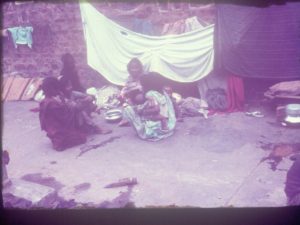Marinscope newspapers. Newspointer
October 13-19, 1993
Meandering , Dwayne Hunn
Marin’s Economic Conference talked about what affordable housing producers have bemoaned for over a decade. In countless council and planning commission presentations, housing advocates campaigned to bring jobs and affordable housing closer together to benefit economics as well as families.
Housing professionals from North Bay Ecumenical Housing, where I once worked, and the Ecumenical Association for Housing attracted little support relative to the need. Warnings that forcing latch key families into longer distance commutes would come back to harm the region were ignored. Why ignored? Because Marin’s power brokers:
1) Believe Marin is too rich and beautiful to suffer even from a national tidal wave of sick economics;
2) Have successfully convinced Marin that they are the White Knights protecting Marin from the omnipresent Darth Vader developers and businesses.
You know those Devious Vader characters — like one developer, who through an equity sharing trust fund wanted to make over half the 2500 units at his proposed Hamilton development affordable for ownership to people earning under $40,000; like the Buck Center on Aging which wants to build a research center dealing with aging ills; or just profit hungry developers who wanted to build 40 relatively affordable units on 20 acres of land but are told by Marin city councils that only six mega-expensive estates will be allowed.
Marin’s power brokers have done a superb job. It helps that the handful of them attach environmental sounding titles to their names. Titles that through much of the nation have done good things for the environment. Consequently, the good vibes created by those environmentalists working outside of Marin benefits Marin’s NIMBYIZED environmentalists.
Marin voters who are unable or unwilling to learn of true local needs believe that whatever Marin’s environmental power brokers have to say is good and right. Those who have tried to aid Marin’s housing and business needs have been ignored for years in front of permit approving agencies. To them Sacramento’s Marin moniker rings true, “the Capitol of NIMBYISM.”
Too many business and developers don’t realize where power lies. Today’s frontiers of growth do not hinge on conquering a physical frontier, resources, courage, skill on technology. Today’s frontiers are perceptual.
When I comment to the guy in the YMCA’s steam room about the IJ’s “Economic forum” headline that, “I don’t have to go to know what was discussed at the forum — expensive housing, long commutes — and the environmental community ignores their pleas.”
“Lucky for us, or we’d be like Oakland…” he responds.
There it is. Perception. A stellar PR selling job. Is he uninformed, unwilling to learn or baked as a rock hard NIMBY? How can you be like Oakland when 88% of the land is in open space agricultural reserve or parks? When only 3% of the land, mostly in the County’s developmental corridor along the railroad track east of the 101, remains for development? How can you become like Oakland?
Today perception scores victories. It’s not how well you can hit a line drive or build a business or create a user friendly, ecologically sound, affordable mixed used development. The skill and building is the easy part. Getting the chance to play the right bail game is the tough part.
A suggestion to businesses and developers. Realize the game is, unfortunately, early and long term politics and marketing. Give a quality product that addresses real environmental, family and economic needs. Join forces regionally to supply those answers.
For example, let me resurrect a regional answer I worked on years ago to little avail.. I tried to convince ten large land-holders along the Marin-Sonoma rail line to jointly draw up plans for what they would like to do with their land. Their planning limits would be to address regional needs with their combined regional developments.
Sonoma wants a train and less freeway. Sonoma wants Marin to provide more of it’s own affordable housing needs. Sonoma and Marin want to reduce 101’s traffic. Marin businesses need large office buildings which their office workers can easily reach. Some communities are hurting for sales tax revenues and a regional tax sharing plan would alleviate the trend toward over commercialization. So work together and draw up a master plan to address those regional needs. Don’t waste time, money and energy skirmishing with the power brokers one-on-one, community by community– without a unified grand vision. Landowners hold the most basic answer to many human and environmental needs–the dirt.
Don’t wait for the government to stumble through decades of devising a regional plan– do it better by yourself. With a plan that offers a host of beneficial answers, you can start winning the perception battle. The perception battle determines the economic and environmental winners.

